🍜 Break Out of Your Ramen Rut with this healing soba noodle soup! 🌱💪

I’m thrilled to share with you a recipe that’s not just a feast for your taste buds but also a nourishing treat for your body – the Gluten-Free Vegan Soba Noodle Soup with Exotic Mushrooms and Leafy Greens.
This dish is perfect for anyone looking to break free from the mundane ramen routine and dive into the rich, aromatic world of Japanese cuisine. Whether you’re a vegan, someone with gluten intolerance, or just a food enthusiast looking to explore new flavors, this recipe is for you!
Why Our Soba Noodle Soup is a Must-Try!
- Bold and Nutritious: This dish is a perfect blend of bold flavors and nutritious ingredients, offering a high-protein, plant-based meal that’s both delicious and healthy.
- A Healthier Alternative: Soba noodles, made from buckwheat, are a healthier option than udon or ramen, providing more protein and essential nutrients.
- Rich in Fiber: The high fiber content in soba noodles aids in digestion and keeps you full, reducing cravings and supporting a balanced diet.
- Nutrient-Dense Ingredients: Our soup is packed with fresh vegetables, tofu, and a variety of mushrooms, each contributing vital vitamins, minerals, and antioxidants for overall health.
- Flavorful and Aromatic: Each spoonful of this soup offers a symphony of umami, and a subtle spice, making every bite a delightful experience.
Intro
Are you a noodle lover? Have you tried soba noodle soup before? If you love the earthy taste of buckwheat soba noodles, you’ll love this classic Japanese soup with a vegan twist.
With nutrients from the exotic mushrooms, tofu, and leafy greens, poured over hot noodles and topped with radishes and wakame seaweed, you’ll have a bowl of noodle goodness – in just under 20 minutes!
This easy soup is refreshing, and perfect for a breezy summer night or for a rainy day and can be enjoyed hot or cold. BONUS: gluten-free and dairy-free.
The Power of Japanese Cuisine
There are not many cuisines in the world that combine so many things that taste as good, and healthy at the same time as Japanese. Would you agree?
Rice, noodles, seaweed, tofu, soy sauce, miso, rice wine, and sake form the foundation of this culinary tradition. Soy and miso, both made from fermented soybeans, and sake, fermented from rice, contribute to the overall healthiness of Japanese cuisine.
Take, for example, the Island of Okinawa, part of the Blue Zone—one of five regions in the world where the local population has a high number of 100-year-olds, who tend to live longer than people in other parts of the world. Their secret is obvious when you look at what they eat. It’s mostly plant-based food with a lot of whole grains, legumes, sweet potatoes and other vegetables.
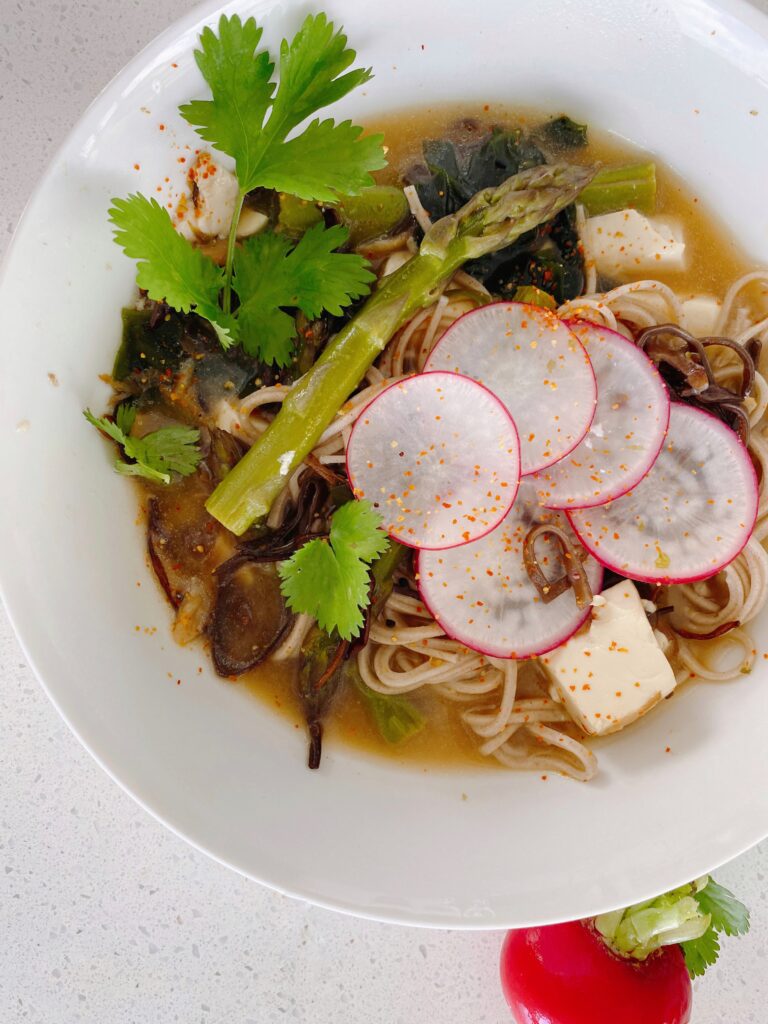
🌟🌟🌟 INGREDIENT SPOTLIGHT 🌟🌟🌟
Don’t overlook the importance of nutrients!
Radish
Radishes are the unsung hero of root vegetables from the mustard family. Though not as popular as cabbage and carrots, with their crisp texture and peppery flavour they are a nutritional powerhouse that deserves to be on your plate.
On average, 100 grams of radish contains only 16 calories but offers powerful antioxidants like vitamin C. This root vegetable is rich in folate, needed for red blood cell production, and high in fiber, which helps lower cholesterol levels. It is also rich in vitamin B6 and a good source of B2 and B5.
🔗 Craving more Asian dishes? Dive into:
🌶️ Fiery Kung Pao Tofu Recipe: Dive into the vibrant world of Sichuan cuisine with this dish. Combining the richness of tofu, black bean noodles, and the crunch of peanuts, it’s a meal that promises an explosion of flavors.
🍜 Vegan Pad See Ew: Experience the authentic flavors of Thailand with this healthy twist on a classic.
Miso
Miso, a Japanese seasoning staple with umami flavour made by fermenting soybeans with salt and koji mold, made of cooked rice with fungus (Aspergillus oryzae).
There are different types of miso paste, such as Hatcho (red), Shiro (white) and Akamiso (brown). While each type offers a slightly different flavour and nutritional profile, they all contribute numerous health benefits. During the fermentation process, beneficial lactobacillus bacteria are produced, enhancing gastrointestinal health by improving digestion and the absorption of nutrients. This makes miso an excellent choice for individuals who suffer from irritable bowel syndrome (IBS).
Miso paste is delivering a wealth of vitamins and minerals that contribute to a healthy immune system, robust red blood cell production, strong bones, and protection against cellular damage caused by free radicals. With notable levels of vitamin B2, vitamin B12, calcium, selenium, manganese, and vitamin K2, miso serves as a remarkable source of these vital nutrients.
Miso’s high content of the amino acid tryptophan makes it a suitable choice before bedtime. Tryptophan helps regulate sleep patterns and promotes relaxation, contributing to a more restful sleep.
TIP: Generally, it’s best to buy unpasteurized miso since pasteurisation kills some beneficial microorganisms.
Soba
Soba noodles, made from buckwheat flour, can be enjoyed either cold or hot, making it the perfect dish for any season.
Here are some of the benefits of soba noodles:
- Rich in nutrients: Soba noodles are a good source of various nutrients, including manganese, thiamine (vitamin B1), and fiber. They also contain important minerals such as magnesium and phosphorus.
- High in antioxidants: Buckwheat, the main ingredient in soba noodles, contains powerful antioxidants like rutin and quercetin. These antioxidants help protect your body against oxidative stress and inflammation.
- Heart-healthy: Soba noodles are low in saturated fat and cholesterol, making them a heart-healthy food option. The presence of rutin in buckwheat can also help improve blood flow and lower blood pressure.
- Good source of fiber: Soba noodles contain dietary fiber, which aids in digestion and promotes a healthy digestive system. Fiber can also help regulate blood sugar levels and promote feelings of fullness, aiding in weight management.
- Gluten-free option: Those with celiac disease or gluten intolerance can enjoy soba noodles, as long as it is made with 100% buckwheat flour.
Here are a few popular types of buckwheat noodles:
- Juwari Soba: These noodles made with 100% buckwheat flour and water, making them gluten-free.
- Nihachi Soba: This variety contains 80% buckwheat flour and 20% flour. While it contains some wheat flour, it still retains a significant amount of buckwheat.
- Gowari Soba: These noodles consist of a 50% flour and 50% buckwheat flour blend. They offer a balance between the flavours and textures of both ingredients.
Wakame
Wakame is an edible seaweed commonly used in Japanese cuisine by adding to sushi, in soups, salads and on top of rice. A low-fat and high in protein, with a good amount of important nutrients such as iodine, vitamin A, K, folate, iron and magnesium.
As a rare plant-based source of vitamin B12 and calcium, wakame is a particularly good food choice for vegans and vegetarians. It is also packed with omega-3 fatty acids, and antioxidants like lignans, that work in the body by blocking the oestrogens that can predispose to cancers such as breast cancer.
Recipe Swaps and Variations
- Protein Swap: Not a tofu fan? Try edamame or green peas for an extra protein kick.
- Mushroom Variety: Feel free to use cremini, button, or portobello mushrooms.
- Meal Prep Friendly: Make a larger batch for easy, healthy meals throughout the week.
Storing Leftovers
Store any leftovers in an airtight container in the refrigerator for up to 3-4 days. This soup is just as delicious reheated, making it a perfect meal prep option.
Pairing Suggestions
Pair this soup with a light, crisp white wine or a soothing cup of green tea to enhance the flavors. For a complete meal, serve with a side of steamed edamame or a fresh cucumber salad.
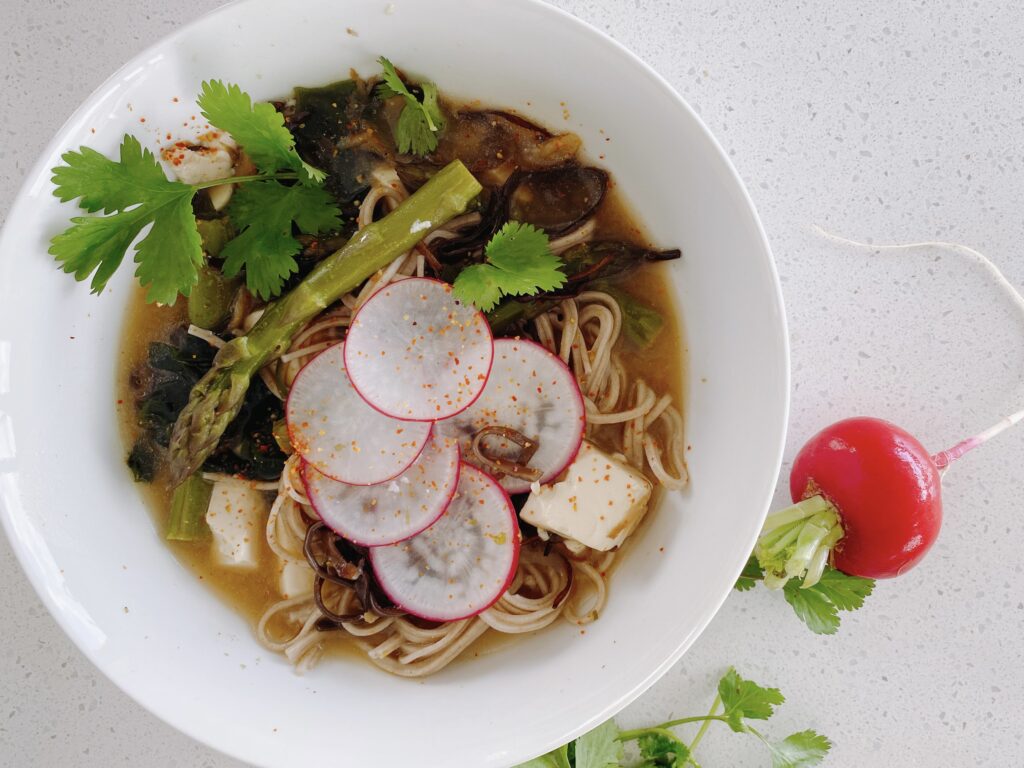
⬇️ FAQs
Q: Can I meal prep this recipe? A: Yes, this recipe is great for meal prep. You can make a larger batch and portion it into meal-sized containers for easy grab-and-go lunch.
Q: How do I store leftovers? A: Store the leftovers in an airtight container in the refrigerator for up to 3-4 days.
Q: Can I make this recipe ahead of time? A: Absolutely! This soup is great for meal prep. Just reheat and serve.
Q: Can I freeze this soup? A: It’s best enjoyed fresh, but you can freeze it without the noodles and add them when reheating.
If you’re as excited about this recipe as I am, I encourage you to share your experience! Try out this Gluten-Free Vegan Soba Noodle Soup, and don’t forget to share your culinary creations with friends and family. Happy cooking, and here’s to a bowl full of health and flavor! 🍜🌿

Gluten Free Vegan Soba Noodle Soup With Exotic Mushrooms and Leafy Greens
Ingredients
- 200 g soba noodles (gluten-free)
- 2 tbsp olive oil
- 1 onion, finely chopped
- 3 cloves garlic, minced
- finely chopped
- 300g exotic mushrooms (shiitake, oyster, enoki)
- 150 g firm tofu, cubed
- 1 litre vegetable broth
- 2 tbsp soy sauce (gluten-free)
- 1 tbsp miso paste (gluten-free)
- 200 g leafy greens of your choice
- 1 radish, thinly sliced
- 1 tbsp dried wakame, rehydrated and chopped
- salt and pepper to taste
Instructions
- Cook soba noodles according to package instructions, drain and set aside.
- In a large pot, heat olive oil over medium heat. Add onion and garlic, sauté until translucent.
- Add mushrooms and tofu, cook for 5 minutes. Pour in vegetable broth, bring to a boil. Reduce heat and simmer for 10 minutes.
- Stir in soy sauce and miso paste until well combined.
- Add leafy greens and wakame, cook until wilted.
- Divide noodles into bowls, pour soup over noodles.
- Garnish with radish slices and season with salt and pepper to taste.

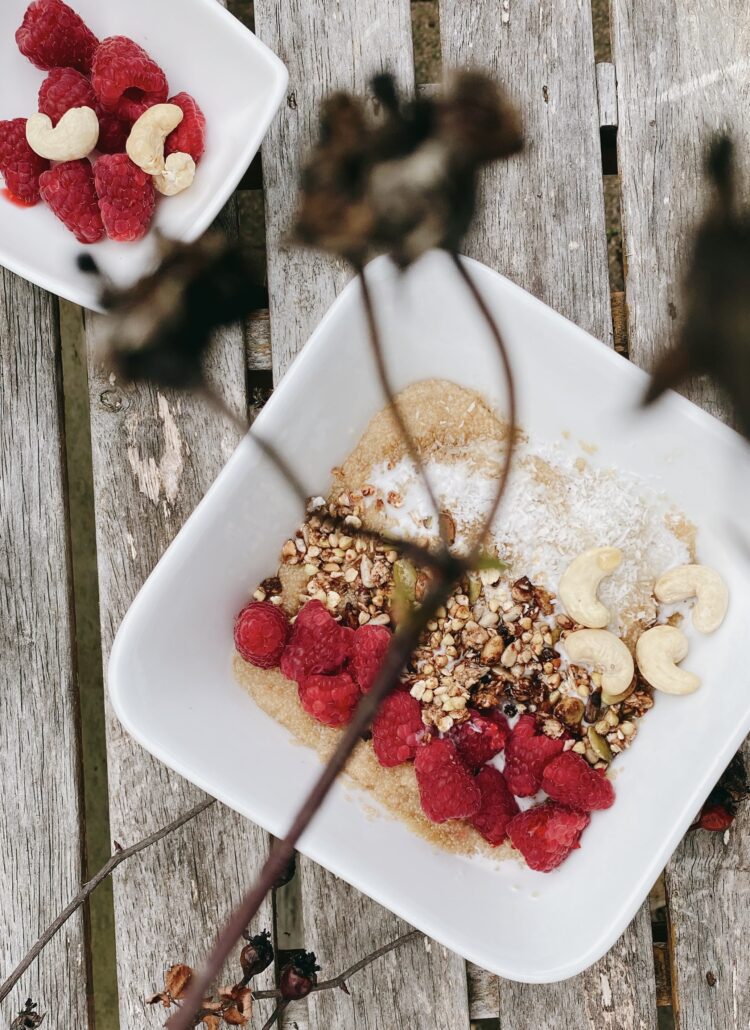
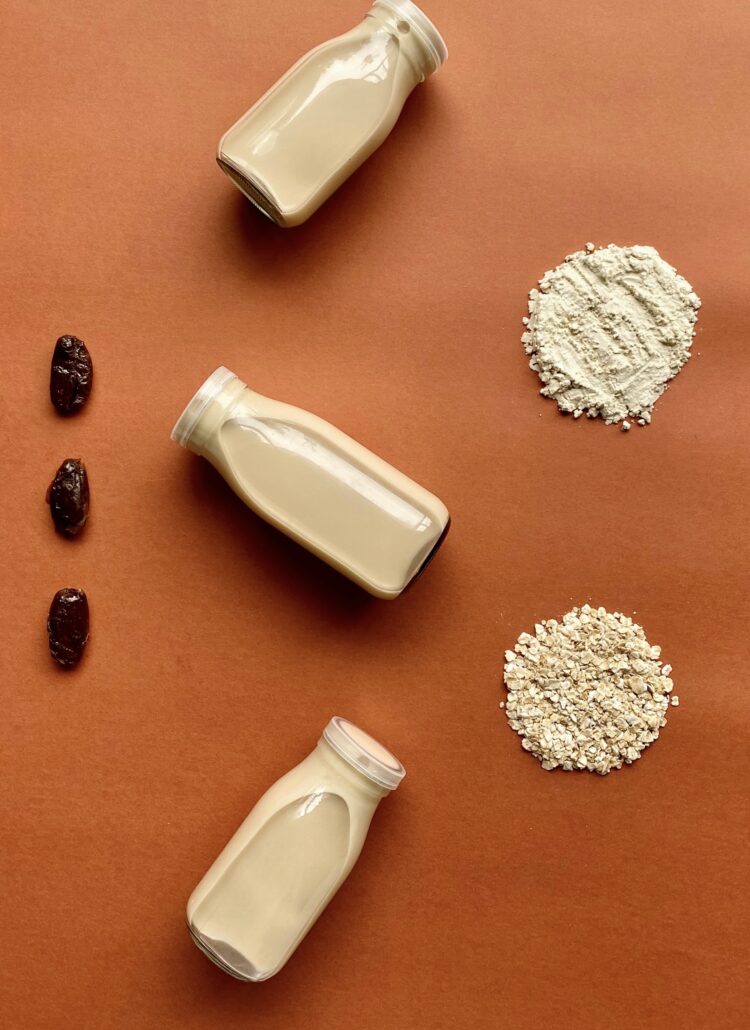
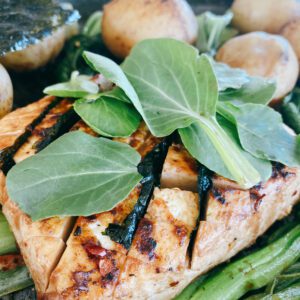
Leave a Reply